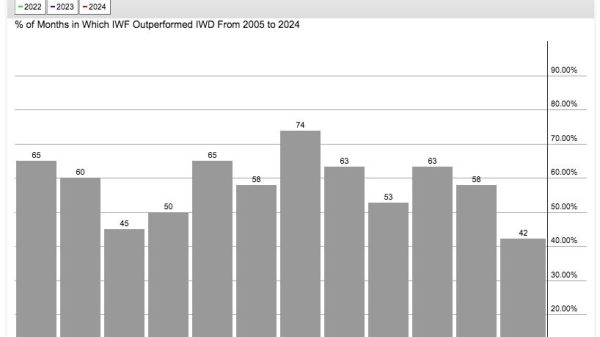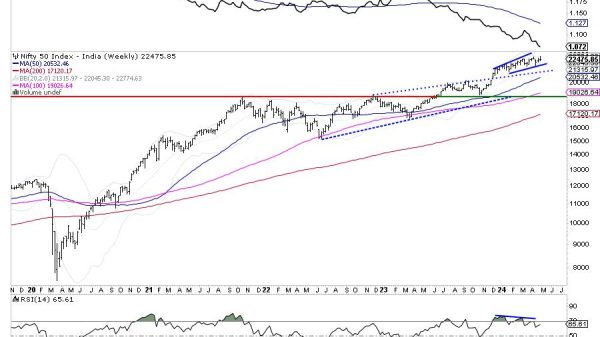World wine consumption dropped to its lowest level since 1996 last year, with production down 10 per cent, after the world’s worst grape harvest in 62 years, a new report has revealed.
While the rising cost of living has put a dent in consumption trends, experts at the Organisation of Vine and Wine (OIV), monitoring trade, blamed ‘extreme’ climate changes for the overall slump.
‘Extreme environmental conditions’ including droughts, fires and other problems with climate were mostly driving the trend and the greatest threat to the industry, according to the organisation.
Major wine producers Australia and Italy suffered the worst, with 26 and 23 percent drops in productivity respectively.
In further bad news for winemakers, customers drank three per cent less wine in 2023, the French-based intergovernmental body said.
Director John Barker highlighted ‘drought, extreme heat and fires, as well as heavy rain causing flooding and fungal diseases across major northern and southern hemisphere wine producing regions.’
Although he said climate problems were not solely to blame for the drastic fall, ‘the most important challenge that the sector faces is climate change.
‘We know that the grapevine, as a long-lived plant cultivated in often vulnerable areas, is strongly affected by climate change,’ he added.
France bucked the falling harvest trend, with a four percent rise, making it by far the world’s biggest wine producer.
Spain lost more than a fifth of its production. Harvests in Chile and South Africa were down by more than 10 percent.
Wine consumption last year was however at its lowest level since 1996, confirming a fall-off over the last five years, according to the figures.
The trend is partly due to price rises caused by inflation and a sharp fall in wine drinking in China – down a quarter – due to its economic slowdown.
The Portuguese, French and Italians remain the world’s biggest wine drinkers per capita.
Barker said the underlying decrease in consumption is being ‘driven by demographic and lifestyle changes. But given the very complicated influences on global demand at the moment,’ it is difficult to know whether the fall will continue.
‘What is clear is that inflation is the dominant factor affecting demand in 2023,’ he said.
Last month it was revealed champagne sales had declined due to the cost-of-living crisis and the availability of cheaper alternatives.
Waitrose reported sales of crémant have overtaken the Spanish fizz cava. Over a period of three months, crémant sales rose by 51 per cent compared with the same period last year.
Sales of prosecco also fell by five per cent in 2019, costing the market approximately £100mn according to the Wine and Spirit Trade Association.
Land given over to growing grapes to eat or for wine fell for the third consecutive year to 7.2 million hectares (17.7 million acres).
But India became one of the global top 10 grape producers for the first time with a three percent rise in the size of its vineyards.
France, however, has been pruning its vineyards back slightly, with its government paying winemakers to pull up vines or to distil their grapes.
The collapse of the Italian harvest to its lowest level since 1950 does not necessarily mean there will be a similar contraction there, said Barker.
Between floods and hailstones, and damp weather causing mildew in the centre and south of the country, the fall was ‘clearly linked to meteorological conditions’, he said.
Climate change was recently implicated as a cause of the severe flooding that derailed Dubai this month.
Between 10% and 40% more rain fell in just one day last week than it would have in a world without the 1.2 degrees Celsius warming that has come from the burning of coal, oil and natural gas since the mid-19th century, scientists at World Weather Attribution said Thursday in a flash study that is too new to be peer-reviewed.
In at least one spot, a record 11 inches (28.6 centimeters) of rain fell in just 24 hours, more than twice the yearly average, paralyzing the usually bustling city of skyscrapers in a desert.
‘It’s not such a clear fingerprint, but we have lots of other circumstantial evidence, other lines of evidence that tell us that we see this increase,’ said Imperial College of London climate scientist Friederike Otto, who coordinates the attribution study team.
‘It’s what we expect from physics. It’s what we expect from other studies that have been done in the area, from other studies around the world, and there’s nothing else that’s going on that could explain this increase.’
Last summer, Greece was devastated by a number of wildfires.
In July, many British tourists were trapped on the island of Rhodes with no way home as officials sought to evacuate those affected.
Almost 17,770 hectares (more than 43,000 acres) were ravaged in 10 days in the south of the holiday island in the southeastern Aegean Sea.
It came as a heatwave swept Europe, leading to drier conditions that make it easier for fires to take hold and spread.
MailOnline spoke to experts, who explained that the scorching temperatures are being driven by three key factors – El Niño, a stationary high-pressure system also known as an anticyclone, and climate change.
Professor Stefan Doerr, director of the Centre for Wildfire Research at Swansea University, said: ‘Any ignition can rapidly turn into a fast moving wildfire.
‘That could be faulty power lines, small intentional fires to burn debris getting out of control, sparks from moving machinery or building activity or arson.
‘Focusing mainly on ignition sources distracts from the main issues which are more flammable landscapes due to insufficient management of vegetation and more extreme weather due to climate change.’
In August, beaches around Athens were deserted as firefighters and water bombing planes attempted to tackle brutal wildfires threatening the south.
Again, meteorologists cited hot and dry conditions adding to the fire risk.
Read more:
Global wine consumption falls to its lowest level since 1996 with production down 10%























